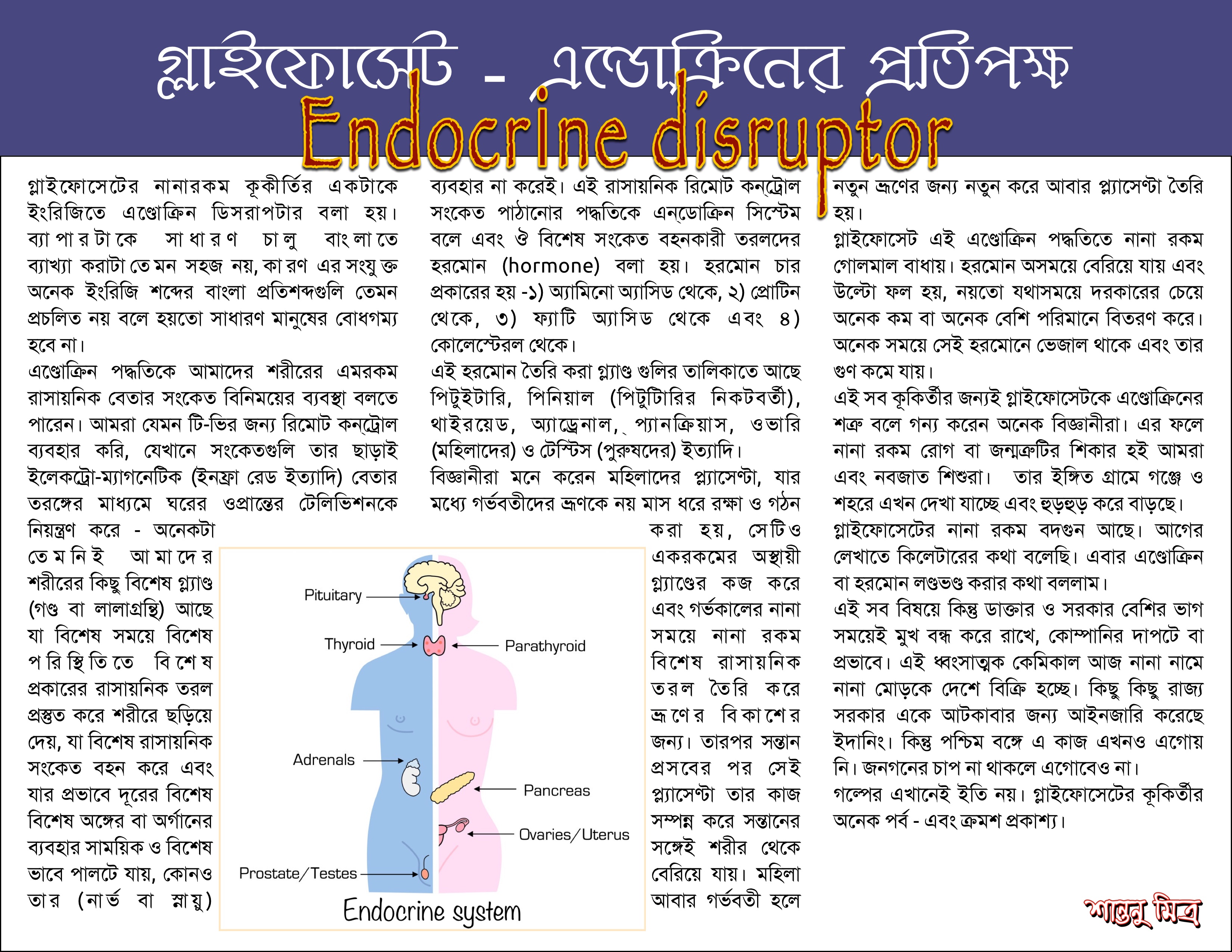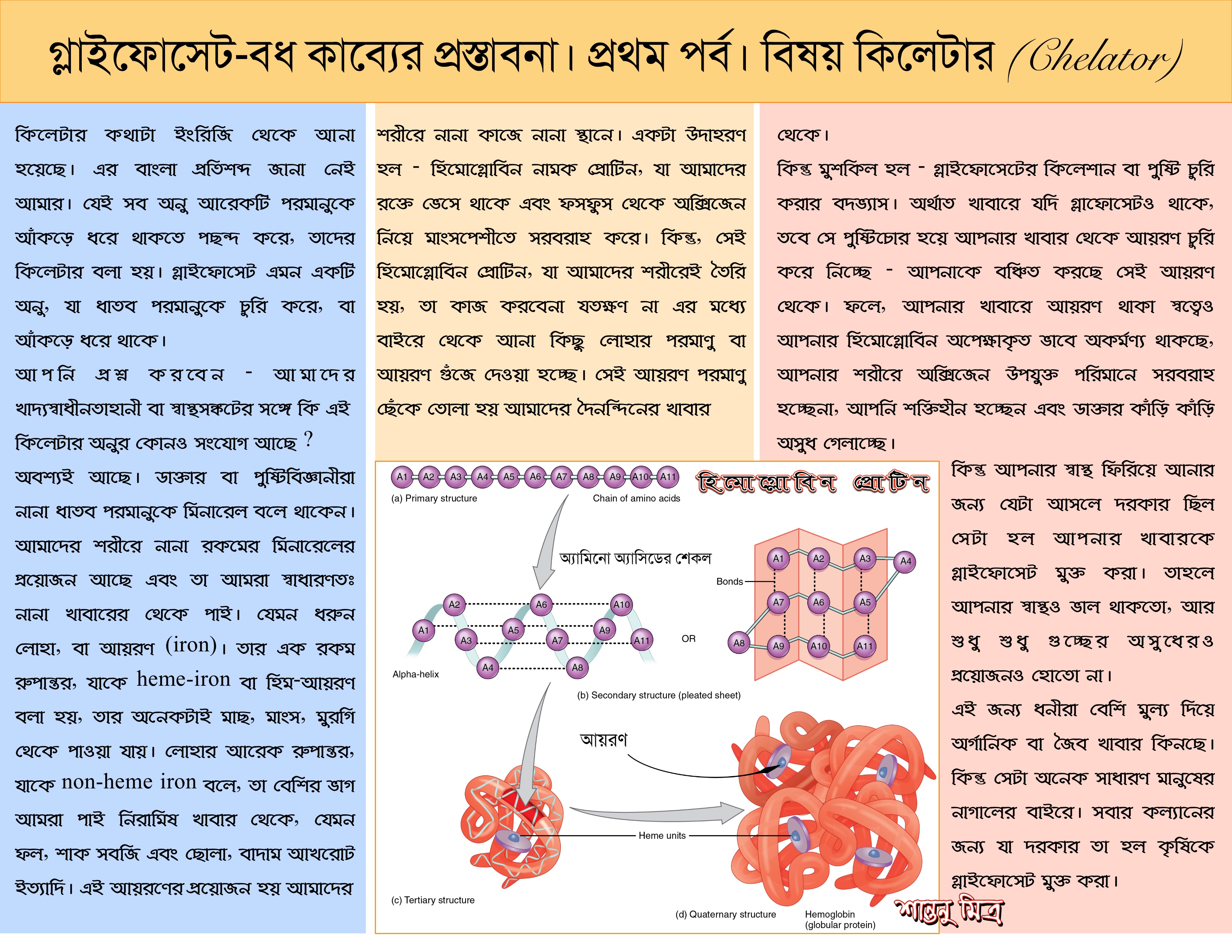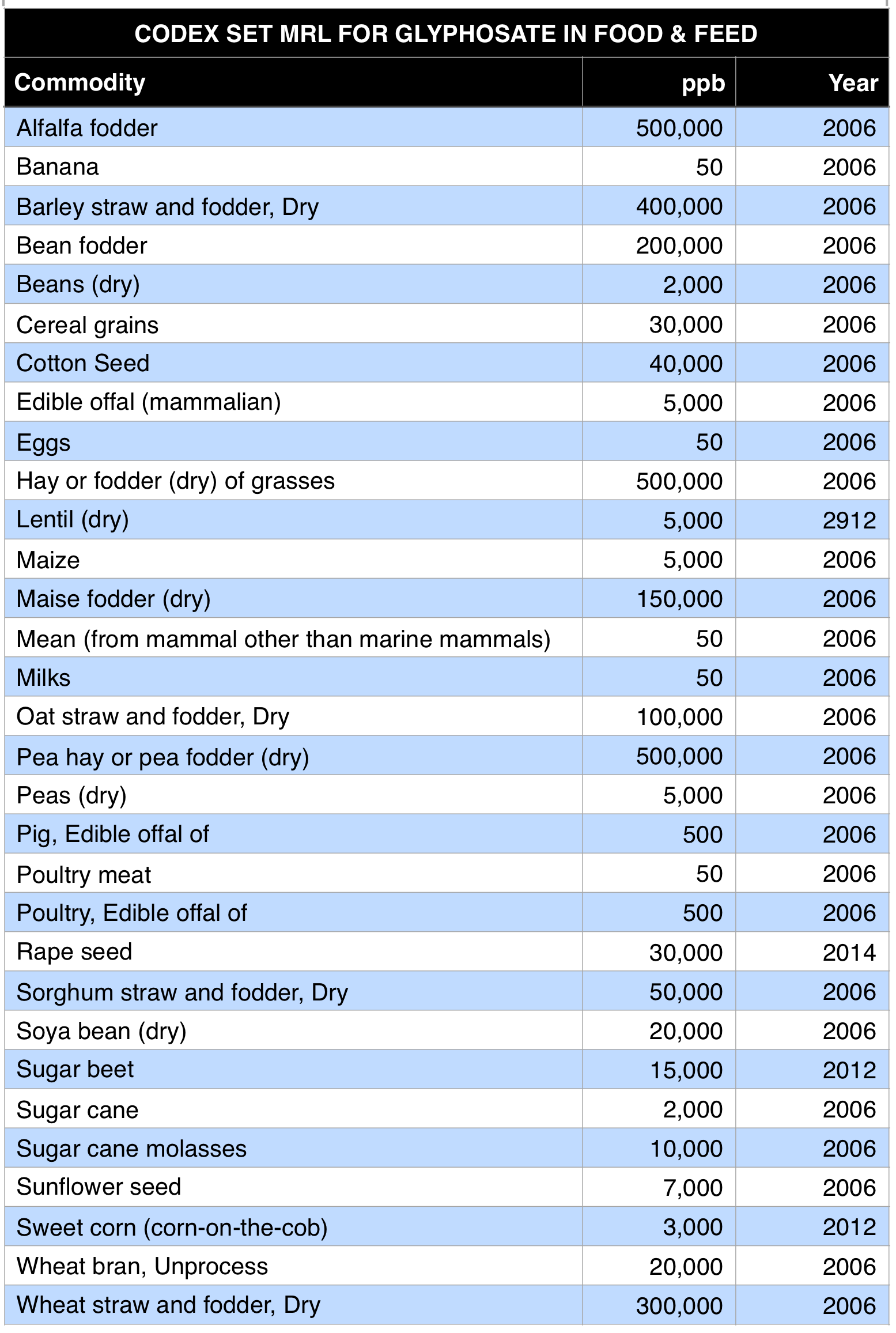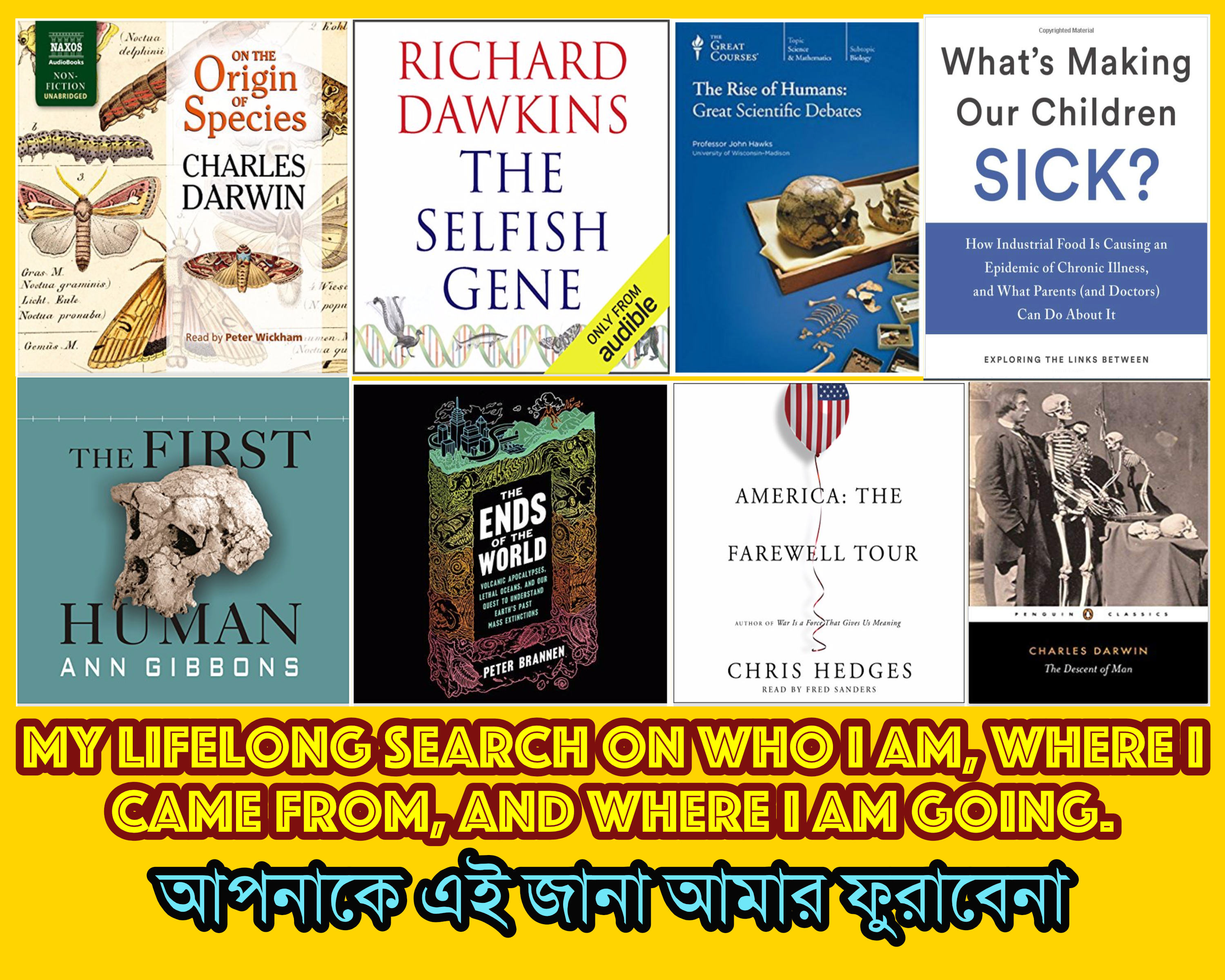There is a very powerful global effort to censure and restrict all efforts to expose problems with glyphosate. The effort comes from the industry and influences governments, media, and academia. The level fo witch hunt would put the days of Copernicus and Joan of Arc to shame.
Science has thus been degraded so much that it has lost its neutrality, its objectivity, its honesty and its relevance in determining safety of agrochemicals – pushing us back to worse times than the Russian block faced during the dark Soviet era of state controlled propaganda and suppression of dissent. Consequently, many citizens like me have developed extreme suspicion about anything that comes out of the government or the industry, and consider most of them are packs of lies.
When it comes to glyphosate, it is therefore the view of public that are aware, is that honest debate on glyphosate is an oxymoron. First, industry’s stronghold on science has to be removed, then independent research without influence of industry or politicians or government officials have to be encouraged. Documents and research papers have to be allowed to accumulate and add to the body of science without censure for twenty years. Let the chips fall where they may. After that, honest debate on the science of glyphosate may be possible. Right now, I am more interested to encourage the citizens to stand up against a government that is showing signs of extreme corruption and blindness an through out politicians that act as lap dogs of the industry rather than protector fo the people.
And yet, I do get called time to time from institutions including agricultural colleges, in India, to speak my mind. India has not yet gone completely over to the dark side like the western institutions. But India is on the way. Anyhow, they still have enough people including educated young, to not only understand and believe that the industry has spoiled science, has spoiled agriculture, food, healthcare and environment, and resistance is necessary.
Thus, I have this blog to list some references for people interested, to see what was said by the slim number of scientists that tried to alert us about glyphosate and about the GM technology.
Some universities requested that my presentation should provided reference material too, with regard to science behind glyphosate’s toxicity. The request might look justified, but it poses problems because what we have today in the name of science is a very far cry from what the western society promotes. Remember the days of the Soviet Union. We were told that they use propaganda for science and severely suppress dissent. Most of that is true. However, the wheel has not turned. There is no Soviet Union. But the west has taken up the tactic, and its corporate industry uses all its combined might to control governments, media and science. Nothing can be researched by scientific institutions without their permission. Nothing can be approved or disapproved by any Government without their say so. Nothing can be published anywhere without their consent.
Therefore, finding honest research that discovered toxicity of glyphosate in normal academic literature might be similar to the famed Bengali saying – সোনার পাথরবাটি – which means stone utensils made of gold – an oxymoron. If it is made of stone, it cannot be made of gold and vice versa. If science on glyphosate has been captured by the industry then there is not going to be research on adverse effects of glyphosate. Duh !
Nonetheless, it is not a homogenous world, and even the industry with all its financial clout, slips up. So there are increasing amounts of documents here and there, and the witch hunt that goes on to attack scientists that dare speak against glyphosate.
1) Anthony Samsel – Stephanie Seneff’s research work
I have already created a blog with all peer reviewed papers of Anthony Samsel and Stephanie Seneff. These can be found here.
in my view, no other group of scientists have done as much research and unearthed as much detail on how many ways glyphosate hurts all living biology including humans. It is therefore not surprising that Samsel and Seneff faced attack as well as censure. Even publications such as GM watch would cover Seralini but not Samsel-Seneff. Monsanto and some governments tried to get the publisher of the Journal ENTROPY to pull their first paper on glyphosate interfering with cyp-450. The publisher sent them a letter that it was going to be pulled, but the US editor of the Journal ENTROPY came to their defense and argued with the publisher. The publisher resolved the controversy and then posted a journal position that they would not be adversely influenced by the opinions and demands of both GOVERNMENTS or corporations. Thus the paper still stands. The set of 6 glyphosate papers by Samsel and Seneff have had more than 60,000 reads and hundreds of Journal citations at Research Gate by academics in over 100 countries. When their first paper was published WIKIPEDIA added the Samsel and Seneff knowledge to the Glyphosate page. Within a few days an argument ensued by reviewers and WIKIPEDIA took all of the information down. I watched the arguments online at WKI. We have never been referenced by WIKIPEDIA since. It is suspected that Monsanto was responsible for removing Samsel and Seneff from the Wikipedia page on Glyphosate. One can assume with some justification that the industry is comfortable defending some of the others, but are alarmed at Samsel and Seneff, enough to get them be de-listed from Wikipedia.
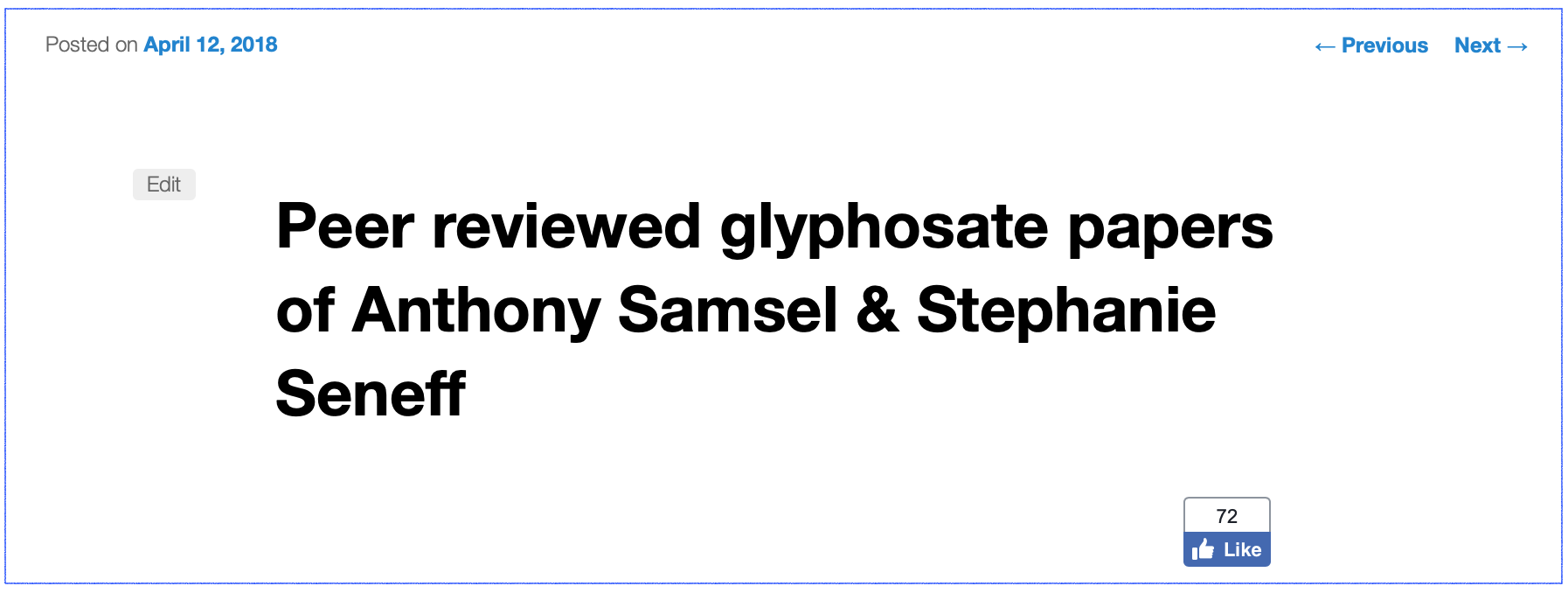
2) Glyphosate disturbing honey bee microbiome
Glyphosate perturbs the gut microbiota of honey bees. The abstract says:
Glyphosate, the primary herbicide used globally for weed control, targets the 5-enolpyruvylshikimate-3-phosphate synthase (EPSPS) enzyme in the shikimate pathway found in plants and some microorganisms. Thus, glyphosate may affect bacterial symbionts of animals living near agricultural sites, including pollinators such as bees. The honey bee gut microbiota is dominated by eight bacterial species that promote weight gain and reduce pathogen susceptibility. The gene encoding EPSPS is present in almost all sequenced genomes of bee gut bacteria, indicating that they are potentially susceptible to glyphosate. We demonstrated that the relative and absolute abundances of dominant gut microbiota species are decreased in bees exposed to glyphosate at concen- trations documented in the environment. Glyphosate exposure of young workers increased mortality of bees subsequently exposed to the opportunistic pathogen Serratia marcescens. Members of the bee gut microbiota varied in susceptibility to glyphosate, largely corresponding to whether they possessed an EPSPS of class I (sensitive to glyphosate) or class II (insensitive to glyphosate). This basis for differences in sensitivity was confirmed using in vitro experiments in which the EPSPS gene from bee gut bacte- ria was cloned into Escherichia coli. All strains of the core bee gut species, Snodgrassella alvi, encode a sensitive class I EPSPS, and reduction in S. alvi levels was a consistent experimental result. However, some S. alvi strains appear to possess an alternative mechanism of glyphosate resistance. Thus, exposure of bees to glyphosate can perturb their beneficial gut microbiota, potentially affecting bee health and their effectiveness as pollinators.
My point is – if it can hurt bee microbiome, it can hurt human microbiome too. But instead of arguing about it, I’d like folks to start testing on lab mammals.
3) Three papers from Channa Jayasumana (Sri Lanka)
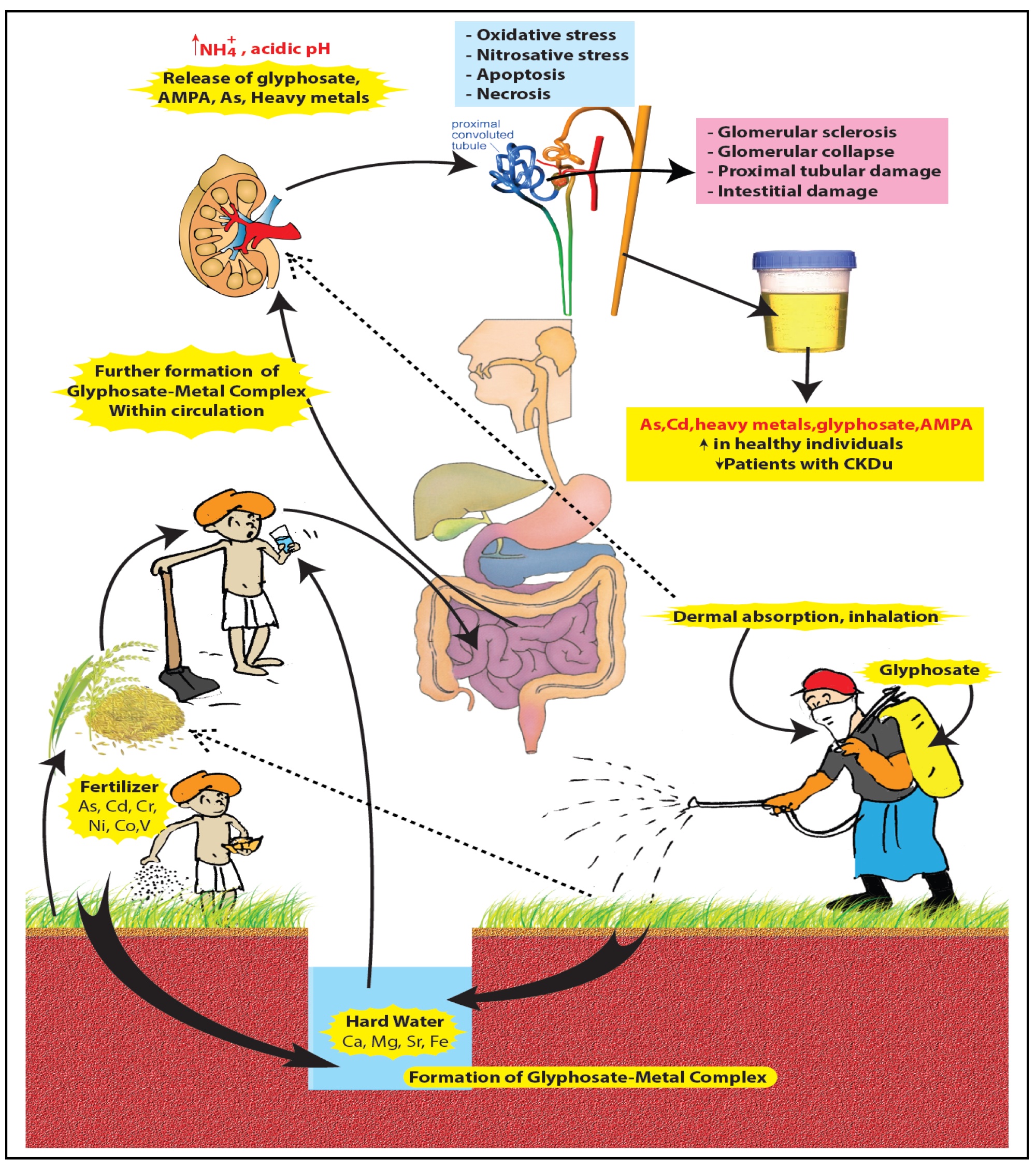
a) Glyphosate, Hard Water and Nephrotoxic Metals: Are They the Culprits Behind the Epidemic of Chronic Kidney Disease of Unknown Etiology in Sri Lanka?
b) Simultaneous exposure to multiple heavy metals and glyphosate may contribute to Sri Lankan agricultural nephropathy.
c) Drinking well water and occupational exposure to Herbicides is associated with chronic kidney disease, in Padavi-Sripura, Sri Lanka.
4) Andres Carrasco
The story of the Pampas. This vast stretch of plains in Argentina used to be teaming with wildlife.
Glyphosate-Based Herbicides Produce Teratogenic Effects on Vertebrates by Impairing Retinoic Acid Signaling.
5) Gilles-Eric Séralini
Republished study: long-term toxicity of a Roundup herbicide and a Roundup-tolerantgenetically modified maize.
6) Árpád Pusztai
Pusztai’s case is a classic example of censuring of scientific research that questions products that harm the people but enhances corporate profit. He was commissioned by the British Government to check safety of genetically engineered potato. He found them to be potentially harmful. He got sacked. His findings published in journals on this topic, got retracted. Later, the medical journal “The Lancet” published it not as an article but as a letter. Pusztai, 36 years working in the UK, saw his career in UK ended because of objecting to GM crop of Monsanto. The most famous toxicologist in Europe got sacked for disagreeing that GM crops where safe.
Effect of diets containing genetically modified potatoes expressingGalanthus nivalis lectin on rat small intestine.
7) Emails between wildlife scientist Judy Hoy & Justin Gude of MDFWP.
Link file.
8) Dr. Mercola on Obama signing the “Monsanto Protection Act.
Continued …



